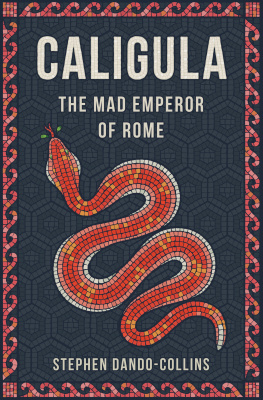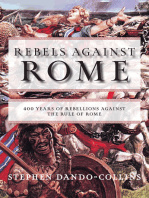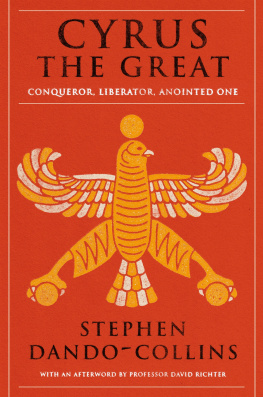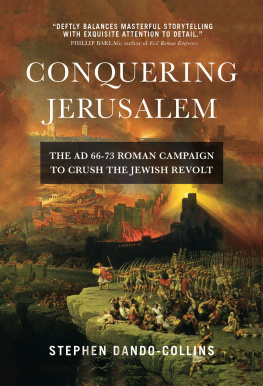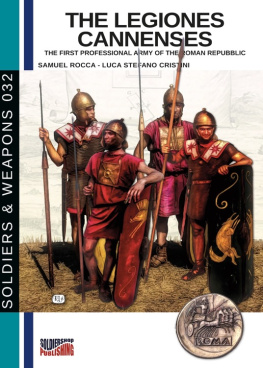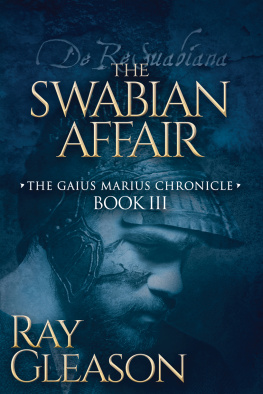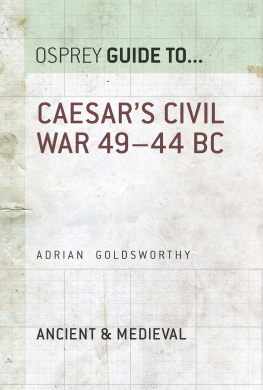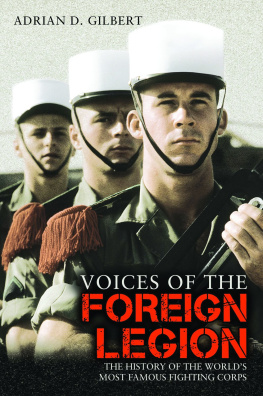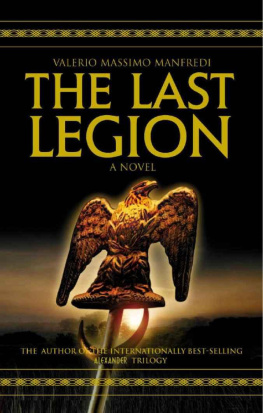LEGIONS OF ROME
THE DEFINITIVE HISTORY OF EVERY IMPERIAL ROMAN LEGION
STEPHEN DANDO-COLLINS


New York London
2010 by Stephen Dando-Collins
All rights reserved. No part of this book may be reproduced in any form or by any electronic or mechanical means, including information storage and retrieval systems, without permission in writing from the publisher, except by reviewers, who may quote brief passages in a review. Scanning, uploading, and electronic distribution of this book or the facilitation of the same without the permission of the publisher is prohibited.
Please purchase only authorized electronic editions, and do not participate in or encourage electronic piracy of copyrighted materials. Your support of the authors rights is appreciated.
Any member of educational institutions wishing to photocopy part or all of the work for classroom use or anthology should send inquiries to Permissions c/o Quercus Publishing Inc., 31 West 57th Street, 6th Floor, New York, NY 10019, or to .
ISBN 978-1-62365-201-2
Distributed in the United States and Canada by Random House Publisher Services
c/o Random House, 1745 Broadway
New York, NY 10019
www.quercus.com
For Louise, who soldiers at my side,
and Richard, who always fights the good fight.
CONTENTS
INTRODUCTION
The Roman legion of the imperial era was a triumph of organization. Its basic structure was so effective that it continues to be used to this day, by armies whose squads, platoons, companies and battalions reflect the contubernium, century, cohort and legion of old. The imperial legion created by Augustus was like a giant Lego set, with each component, from heavy infantry to cavalry, artillery to supporting auxiliary light infantry, fitting neatly together to form a solid, self-contained military machine.
The fearsome effectiveness of the organizational structure, training, and tactics of the legions were so universally acknowledged that several of Romes greatest foes used them against her. Men who had formerly served in Romes army and went on to raise rebellions against her not only organized their own forces along Roman lines, their intimate knowledge of how the legions operated allowed them to employ tactics which exploited their few weaknesses. As a result, Arminius destroyed Varus and his three legions in Germanys Teutoburg Forest, Tacfarinas was able to terrorize North Africa for years, and Civilis took the Rhine and seven legions from Rome and threatened to remove all of Gaul from Roman control.
The legions make-up, originally homogeneous as a result of mass enlistments in specific provincial areas, became increasingly ethnically diverse, with men from opposite ends of the Roman world bringing greatly varying customs, dialects, and religious observances to their legions without any detrimental effect to the serviceability of the overall unit. This can be put down, in part, to the fact that, like a modern military unit, legions had for centuries possessed a strong corporate identity, with the battle honors of previous enlistments being cited by commanders to rouse their troops to greater battlefield deeds.
It is remarkable that even though all the imperial legions sprang from common roots and used common training and equipment, their performance varied. Some were consistently reliable while others were fated to disappoint. Others that had once failed later grabbed glory with spectacular victories. Others still did not live up to earlier reputations. The legions destroyed with Varus in the Teutoburg Forest, for example, had been, up to that time, considered by Velleius, an officer who served with them on the Rhine, among Romes best and bravest. Yet clever tactics by their attackers and poor leadership by their commander led to their destruction.
The question of leadership emerges time and again in the history of the legions. The 12th Fulminata Legion, for example, poorly led in Romes initial confounded attempt to put down the first-century Jewish Revolt, disgraced itself by losing its eagle standard to the rebels. A century later, this same legion regained its reputation by standing firm in a thunderstorm to save its leader Marcus Aurelius from surrounding German hordes. Vastly outnumbered but under firm leadership, the 14th Gemina Martia Victrix Legion similarly gained fame, by defeating Boudiccas rebels in Britain.
The first century and the early part of the second century represented the golden age of the legions, when massive armies of up to 100,000 legionaries and a similar number of auxiliaries swept all before them, and a legionary could expect to retire rich with the spoil of conquest. From the death of the emperor Trajan in AD 117, the situation changed. Stretched thin along porous borders, Roman forces were forced permanently on to the defensive. Internal divisions would soon regularly rend the empire. Central control was frequently lost, reasserted, and lost again.
In the process, the quality of the men and their units declined, as their leaders increasingly adopted foreign mercenaries and foreign methods, created ever more new units, and changed the legions organizational structure. And with change came regular defeat, stimulating even more debilitating change. Only the occasional emergence of a great commander stemmed the tide of decline and even offered hope of a return to the glory days, but always just for the duration of his lifetime.
The long existence of the Roman Empire had everything to do with the legions. While the legions were strong, Rome was strong. Conversely, the disintegration of the Late Empire had everything to do with the disintegration of the legions as effective fighting forces. At the end of the fourth century, the Notitia Dignitatum listed several hundred legions and auxiliary units of the day, yet these units were small, with many no more than border police and some perhaps existing only on paper. Even the most elite units then in existence paled in comparison to the Augustan legions. Vegetius plea to his emperor Valentinian, just prior to the creation of the Notitia Dignitatum, for a return to the legion structure, weapons and training of old, fell on deaf ears.
When, in AD 398, Romes last great general, Stilicho, son of a Vandal cavalry commander, put together a task force in northern Italy to wrest Africa back from rebel governor Gildo, the state of the legions then mirrored the state of the empire. Stilichos force was organized from Mediolanum (Milan), which had superseded Rome as imperial capital in the West, and it sailed from Pisa in Tuscany, not from one of the old imperial naval bases of Misenum or Ravenna. This army consisted of legions including the Jovian, Herculian, and 3rd Augusta, plus several auxiliary unitsalthough the distinction between legionary and auxiliary had blurred since Commodus AD 212 decree had made Roman citizenship universal.
Yet, this task forces seven units totaled no more than 5,000 men, most of them Gallic veterans. Romes once proud legions had shrunk to complements of some 1,000 men each, less than a fifth the size of the Augustan legions. Training, equipment, and tactics had also changed drastically since the days of Augustus. Legionaries were now using light equipment and light arms. Not long before this, entire units had thrown away their armor and helmets, claiming they were too heavy, to fight unprotected, with predictably fatal results.
Stilichos task force won back Africa without having to lift a swordthe very sight of their disciplined ranks caused the rebel governors troops to run. But it would be a different story just three years later, when Alarics Visigoths invaded Italy. Stilichos legions, withdrawn from Britain and the Rhine to save Italy, would, under his inspiring leadership, fight bloody battles and conduct gritty sieges, driving the Visigoths out of Italy. Yet once Stilicho died, soon after, those same legions were devoured by Alaric, who, in AD 410, achieved his ambition of sacking Rome.


